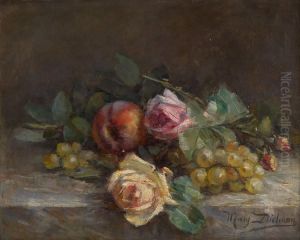Marguerite Dielman Paintings
Marguerite Dielman was a Belgian painter born in 1849 in Ghent, Belgium. She was known primarily for her works that depicted domestic scenes, portraits, and still lifes. Dielman's work was influenced by the Realist movement, which sought to depict subjects as they were, without idealization, focusing on everyday life and ordinary people.
During her lifetime, Dielman was recognized for her artistic talent and became one of the few female artists of her time to gain public attention. Her upbringing in a cultural environment, with her father being the painter Pieter Franciscus Dierman (Dielman), allowed her to develop her artistic skills from an early age. She received her initial training from her father before further refining her abilities at the Royal Academy of Fine Arts in Ghent.
Throughout her career, Dielman exhibited her work at various salons and exhibitions. She was part of a movement of women artists who were gradually being accepted into the professional art world, which had been predominantly male-dominated. Despite societal restrictions on women at the time, she carved out a space for herself to create and exhibit her art.
Dielman's paintings are characterized by a gentle touch and a keen eye for detail and composition. She often depicted women and children, capturing the nuances of their daily lives with sensitivity and a sense of intimacy. Her work was appreciated for its ability to convey the emotional depth of her subjects through subtle expressions and gestures.
Marguerite Dielman's contribution to the art world was significant in paving the way for future generations of female artists. By the time of her death in 1930, she had established a legacy that would inspire other women to pursue their artistic ambitions despite the challenges they might face. Her paintings remain celebrated for their depiction of the simplicity and beauty of domestic life, and they continue to be admired for their technical skill and emotional resonance.

